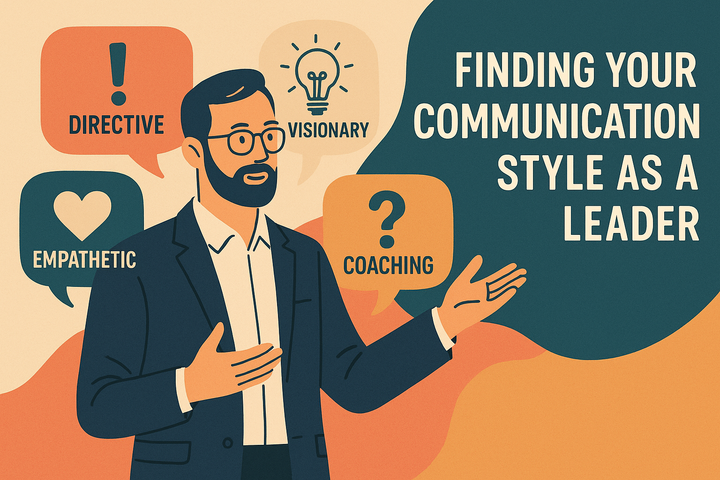The Difference Between Being Understood and Being Remembered
Effective leaders balance clear communication with storytelling to ensure their messages are understood and remembered.

Clear communication helps people understand your message quickly, but making it memorable requires emotional connection and storytelling.
- Understanding focuses on precision and clarity for immediate comprehension.
- Being remembered relies on emotional resonance, stories, and vivid visuals to leave a lasting impression.
- Research shows 73% of statistical data is forgotten within 24 hours, while stories retain two-thirds of their impact.
Quick Tips:
- Simplify Complexity: Use plain language and visuals to make your message accessible.
- Know Your Audience: Tailor your message to their knowledge and interests.
- Tell a Story: Use personal experiences and emotional connections to make ideas stick.
Clear communication ensures understanding in the moment, but storytelling transforms messages into lasting memories.
Harness the Power of Storytelling in Leadership to Inspire ...
Understanding vs Remembering: Key Differences
Leaders need to communicate in a way that's both easy to grasp and hard to forget. Achieving these two goals calls for distinct strategies.
Clear Communication Basics
Clear communication is all about delivering accurate, straightforward information that builds trust.
Here's a side-by-side look at how communication strategies differ:
| Communication Element | Clear Understanding | Lasting Memory |
|---|---|---|
| Primary Focus | Precision and relevance | Emotional resonance |
| Time Impact | Immediate response | Long-term recall |
| Key Components | Straightforward language, structured ideas | Stories, vivid visuals |
| Measurement | Instant clarity | Retention and application |
While clarity is crucial, it’s equally important for leaders to ensure their messages leave a lasting impression.
Making Messages Stick
To create memorable messages, leaders should simplify complex ideas into visuals that resonate, tie tasks to a bigger purpose, and use emotional storytelling to engage their audience.
During times of organisational change, prioritising clarity is key. Leaders must clearly communicate what changes are happening, why they are necessary, and how they impact the team. For long-term goals, weaving in compelling stories helps maintain engagement and inspires action.
3 Steps to Clear Communication
Clear communication takes effort and a thoughtful approach. To make sure your message lands, focus on keeping it simple and impactful. Here's how.
Cut Out Complexity
Using technical terms or overly complicated explanations can make your message harder to follow.
Here’s how you can simplify your communication:
| Communication Element | Typical Approach | Simplified Approach |
|---|---|---|
| Technical Terms | Use of industry jargon | Plain, everyday language |
| Concept Structure | Presenting multiple ideas | Focusing on one idea at a time |
| Message Length | Lengthy, detailed explanations | Short and to the point |
| Supporting Material | Heavy text | Visuals and relatable examples |
Understand Your Audience
Knowing who you're speaking to is key.
Think about what your audience knows, what they care about, and how they prefer to communicate. For instance, you might use technical terms with experts but opt for simpler language when addressing a general audience.
Start by gathering these details about your listeners:
- Their current knowledge or expertise
- Their main interests or concerns
- How they prefer to receive information
- Possible objections or challenges they might have
Once you’ve got this, keep your central message consistent across different groups.
Stick to Your Core Message
Focusing on your main point helps avoid confusion. Communication expert Carmine Gallo explains:
"Leaders who reach the top do not simply pay lip service to the importance of effective communication. Instead, they study the art in all its forms - writing, speaking, presenting - and constantly strive to improve on those skills"
To stay on track:
- Use memorable metaphors to reinforce your key ideas
- Break down complex concepts with simple, clear words
Clear communication not only helps people understand but also makes your message stick.
Making Stories People Remember
To make a message stick, clarity alone isn't enough.
Connect Through Emotion
Studies show that our emotional centre, the amygdala, plays a crucial role in how we store memories.
Incorporating emotion into your message can make it more memorable. Here's how you can use emotion effectively:
| Emotional Element | Impact on Memory | How to Use It |
|---|---|---|
| Personal Stories | Builds relatability | Share real-life experiences |
| Shared Values | Establishes trust | Highlight beliefs your audience shares |
| Human Impact | Boosts engagement | Show tangible outcomes |
| Social Connection | Creates a sense of belonging | Focus on collective experiences |
Engaging emotions in this way naturally sets the stage for the power of imagery in storytelling.
Paint Mental Pictures
Words have the power to create vivid mental images. Stanford GSB Assistant Professor Ada Aka puts it perfectly:
"Words are incredibly powerful. Think about this: they shape how we perceive the world around us, but also how the world stays with us over time".
You can make your audience visualise your message by:
- Using specific, concrete language instead of abstract ideas
- Choosing descriptive and vivid words
- Keeping the tone conversational to make it more relatable
- Adding unique details to help your story stand out
Clear and engaging descriptions can make your message unforgettable, setting the stage for actionable takeaways.
End with Action Steps
Once you've captured attention with a compelling story, tie it all together with clear, actionable steps.
"If you want your target audience to remember your message the next day, tell a story".
Combine storytelling with practical guidance to leave a lasting impression:
| Story Element | Action Step | Memory Trigger |
|---|---|---|
| Core Message | Key takeaway | What to hold onto |
| Key Challenge | Practical solution | How to act on it |
| Future Vision | Steps to implement | Where to begin |
While data can inspire immediate decisions, blending it with storytelling ensures your message resonates long after it's delivered.
Common Communication Mistakes
Leaders often make errors that undermine clarity and reduce the impact of their messages.
Using Too Much Jargon
Relying on technical terms and buzzwords can alienate your audience.
"Jargon puts up a wall... Using terms unfamiliar to your readers or audience can seem noninclusive and even divisive."
Studies show that presentations packed with jargon fail to engage audiences, even when definitions are provided. People leave less informed and less connected.
| Instead of Using | Try This | Why It Works |
|---|---|---|
| Ideation | Thinking | Easier to understand |
| Deliverable | Report | Clear and straightforward |
| Leverage | Use | Simple and precise |
Avoiding jargon is just one part of the equation. Building a personal connection is equally critical.
Lacking Human Connection
Focusing only on data and facts while ignoring the emotional side of communication is a common mistake. This can make messages forgettable.
Mark Green's research highlights that leaders often overestimate how well they communicate. Strong communication requires shared context, relatable framing, and emotional resonance. Without these elements, your message risks being misunderstood or ignored.
Unclear Goals
"The single biggest problem in communication is the illusion that it took place."
To ensure clarity:
- Define your goal before speaking
- Focus your message on specific outcomes
- Use open-ended questions to check understanding
- Provide context that your audience can grasp
To make your communication effective, stick to clear, relatable language, connect emotionally, and set clear objectives.
What next
Research indicates that while statistics lose 73% of their impact within a day, stories tend to stick much longer. This difference highlights the importance of crafting messages that resonate and endure.
Here’s how to create lasting and impactful communication:
-
Connect Before Content
Focus on emotion first, logic second. -
Balance Data with Stories
Use data to drive immediate action, but wrap it in a story to make it memorable. -
Show, Don’t Just Tell
Create experiences that let your audience feel your message, making abstract ideas easier to grasp.
FAQs
How can leaders communicate clearly while also creating messages that leave a lasting impression?
To strike a balance between clarity and memorability, leaders should focus on simplicity, emotional connection, and relevance. Start by using clear, straightforward language that avoids unnecessary complexity, ensuring your message is easy to understand.
To make it memorable, incorporate emotional resonance by sharing relatable stories, using vivid imagery, or appealing to shared values. Tailor your message to your audience’s specific needs and priorities, ensuring it feels personal and meaningful. By combining clarity with emotional depth, leaders can build trust, inspire action, and ensure their message is both understood and remembered.
How can I turn statistical data into memorable and impactful stories for my audience?
To make statistical data more engaging and memorable, weave it into a compelling story. Data on its own can be difficult to recall, but when paired with an anecdote or vivid example, it becomes much easier for your audience to connect with and remember. Focus on creating emotional resonance by highlighting the human element behind the numbers - whether it’s a personal experience, a customer journey, or a real-world scenario.
Use vivid imagery to bring the data to life, helping your audience visualise its significance. For example, instead of saying '10,000 people were affected,' describe a scene or experience that illustrates the impact on individuals. Finally, ensure your story has a clear takeaway that reinforces your message, making it both memorable and actionable.
Why is it essential to adapt your communication to your audience, and how can you do this effectively?
Adapting your communication to your audience is crucial because it ensures your message is both understood and remembered. When people feel the information is relevant to their knowledge, interests, or experiences, they are far more likely to engage with it and retain it over time.
To achieve this, focus on:
- Knowing your audience: Understand their background, priorities, and what matters most to them.
- Starting with the main message: Clearly state your key point early on to boost comprehension and recall.
- Using relatable examples: Stories, analogies, or imagery that resonate emotionally can make your message more memorable.
By tailoring your communication in this way, you can create a lasting impact that goes beyond simple understanding.



